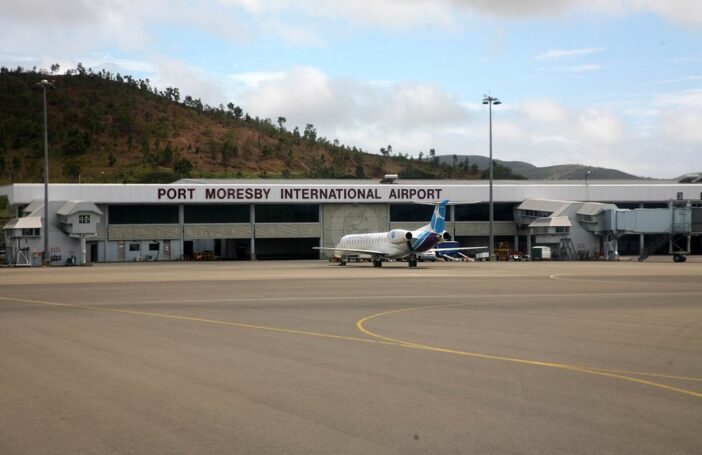This is the third of a series of posts analysing arrival and departure data in Papua New Guinea. The first post showed how arrivals to PNG had boomed over the last decade, and the second post linked the growing number of visitors to PNG for employment and business to the country’s economic boom. In this post, I will explore the country of residence of visitors arriving in PNG.
Figure 1 shows visitor arrivals by continent and Table 1 shows the number and proportion of visitors by continent for 1999, 2006 and 2013. Australia has remained the major source of visitors, contributing almost half between 1999 and 2013. In 1999, 33,152 visitor arrivals from Australia were counted (49% of the total number of visitor arrivals), rising to 80,537 in 2013 (48%).
Figure 1: Visitor arrivals by continent
 Note: Underlying data for all charts available here.
Note: Underlying data for all charts available here.
Table 1: Visitors by continent, 1999, 2006, 2013; total number (and percentage)
 Figure 1 and Table 1 show that the number of visitor arrivals increased from every continent between 1999 and 2013. While the proportion of visitors from Australia, New Zealand and Oceania, and Africa remained largely unchanged over the 15 year period, the proportion of visitors from Asia rose sharply, largely at the expense of visitors from Europe and the Americas.
Figure 1 and Table 1 show that the number of visitor arrivals increased from every continent between 1999 and 2013. While the proportion of visitors from Australia, New Zealand and Oceania, and Africa remained largely unchanged over the 15 year period, the proportion of visitors from Asia rose sharply, largely at the expense of visitors from Europe and the Americas.
Visitor arrivals from Asian countries experienced the largest increase, in absolute numbers and as a proportion of total visitor arrivals. In 1999, 12,758 visitors were from Asia (18.8%), increasing to 53,194 (31.6%) in 2013.
Since the rise of visitor arrivals from Asia is remarkable, I look at these figures at the country level. Figures 2 and 3 show the number of visitor arrivals from several Asian countries, as well as the proportion of total arrivals from these countries out of total Asian arrivals, for 1999 and 2013 respectively.
Figure 2: Visitor arrivals from Asian countries, 1999
(Number per country and % of all Asian visitor arrivals)
Figure 3: Visitor arrivals from Asian countries, 2013
(number per country and % of all Asian visitor arrivals)
 The Philippines was the major Asian source country of visitor arrivals in both 1999 and 2013, and the number of visitor arrivals from the Philippines has increased rapidly. In 1999, PNG recorded 3,535 visitor arrivals from the Philippines, equivalent to 27.7% of all Asian visitors (or 5.2% of all visitors). This number rose to 22,153 visitors in 2013, equivalent to 41.6% of all Asian visitors (or 13.2% of all visitors). This is a more than six-fold increase over a 15 year period. Since 2007 the Philippines has been the second most important country of residence of visitors after Australia, replacing the US and Japan, which held the second and third ranks in 2006. The number of visitor arrivals from China and Hong Kong grew even more rapidly between 1999 and 2013, recording a more than seven-fold increase, albeit from a much lower base.
The Philippines was the major Asian source country of visitor arrivals in both 1999 and 2013, and the number of visitor arrivals from the Philippines has increased rapidly. In 1999, PNG recorded 3,535 visitor arrivals from the Philippines, equivalent to 27.7% of all Asian visitors (or 5.2% of all visitors). This number rose to 22,153 visitors in 2013, equivalent to 41.6% of all Asian visitors (or 13.2% of all visitors). This is a more than six-fold increase over a 15 year period. Since 2007 the Philippines has been the second most important country of residence of visitors after Australia, replacing the US and Japan, which held the second and third ranks in 2006. The number of visitor arrivals from China and Hong Kong grew even more rapidly between 1999 and 2013, recording a more than seven-fold increase, albeit from a much lower base.
Overall, this analysis shows the enduring links between PNG and Australia, with the latter still accounting for almost half of all visitor arrivals to the former. Yet change is clearly afoot. Asia is becoming a more important source region for visitors to PNG, at the expense not of Australia, but of other regions. Asia is the fastest growing source region and, within Asia, the Philippines is the fastest growing source country (of all countries). I will explore the drivers of this mix of stability and change in my next post.
Notes:
- Data refer to the country of residence rather than the country of nationality of visitors, which is also available. In general, the numbers for both categories are similar. The reason for country of residence being used in this analysis is that people usually have only one country of residence, but can have more than one nationality, possibly leading to inconsistencies when using the nationality category.
- Data on the country of residence of visitor arrivals are available only from 1999 onwards and not from 1996, as some other data.
- PNG was included as a country of residence in 2004 and 2005 but it is unclear even to the NSO how these numbers came about and subsequently went back to zero. It is also unclear why 4,929 visitors did not state their country of residence in 1999, while the number of visitors not stating their country of residence subsequently was zero or minute.
- As the major source country, Australia is listed separately from New Zealand and Oceania.
Carmen Voigt-Graf is a Fellow at the Development Policy Centre, and a Senior Research Fellow at the National Research Institute in Papua New Guinea.





